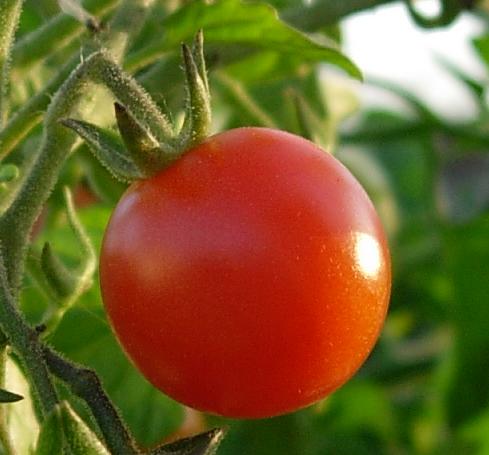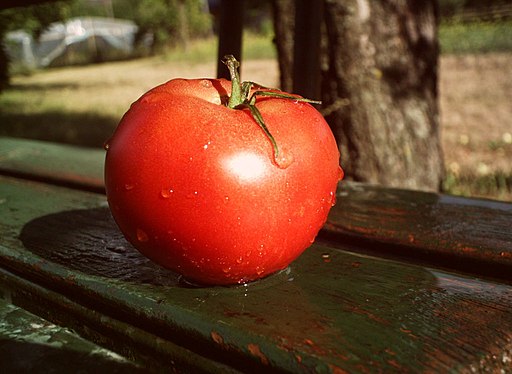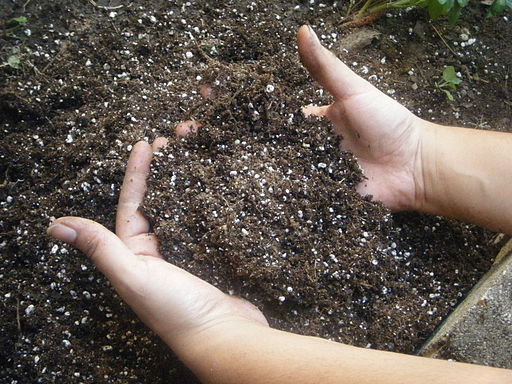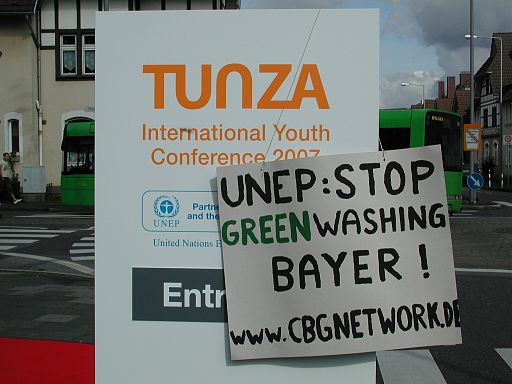Grow a Perfect Tomato
To grow a perfect tomato, start with a planter on wheels. You could put your tomato plant in the ground, but you would have to erect a fence to protect it from critters, and you couldn’t control the soil nutrients and watering as well as you could when the plant is in a pot. Place the planter as close as possible to your house or apartment, preferably on a deck or balcony, the idea being to discourage critters, while making it easier for you to tend your plant. The planter needs wheels because your tomato plant needs as much soil as possible, preferably in a deep pot, and that makes the whole contraption heavy. Depending on where the sunlight falls at your place and on your critter situation, you may want to move that planter around a bit.
Now that you have a planter on wheels, preferably a deep planter so that it holds water longer than a shallow one, fill that planter with high quality organic potting soil that has good stuff already in it, like bat guano and worm castings. In order for your tomato plant to stay healthy and productive throughout the growing season, quality potting soil which doesn’t rely on synthetic fertilizers is the key component. Plant your plant, good and deep, and water it in. Your tomato plant is off to a good start.

A tomato growing on its stem. Photo by tooony.
Once your tomato plant starts growing, you will need to place a cage or some kind of sturdy supports around it before it gets out of hand sprawling all over the place. Some tomato plants are more compact than others, but even they will appreciate support for their fruits when they come along. Now is also the time to consider additional critter control measures if necessary by installing a net or other guard along with the cage or supports. Your tomato plant is of value to you, and it could be to others as well, others who are always watchful and ready to strike the moment the fruit is ripe.
Water your tomato plant deeply and infrequently, rather than shallowly and frequently. You will need to keep an eye on the weather. A rain gauge may help. Too much water is bad, as is too little. The amount and intensity of sunlight affects the amount of water your tomato plant needs. Stick your finger several inches deep into the potting soil, and if the soil is dry and no rain is in the forecast, water your plant well. Inspect your plant weekly for tomato hornworms, more if you see signs of leaf eating. Pick off and discard the hornworms. The same goes for leaves stricken with blight – pick off and discard them.

A ripe and ready perfect tomato. Photo by Letrek.
Once your tomato plant starts bearing fruit, be even more judicious with your watering. Too much water at this point could lead to disfigurement of the fruit, as well as ruining their flavor. Add calcium to the soil, along with an organic fertilizer high in phosphorous. Phosphorous will help the fruits grow and multiply, and calcium will keep them healthy. Relax and watch the fruits of your tomato plant turn from green to pink to red. When the fruits are ready for you, they will separate from the plant with a gentle tug from you. If they won’t come free readily, you can still cut them free at the stem and put them on the kitchen counter to continue ripening over a couple of days. They will be delicious!
Cost per tomato: Between 5 and 10 dollars the first year, cheaper afterward.
— Izzy 


